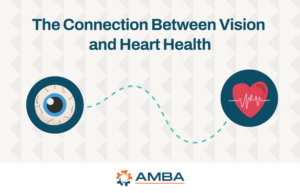The saying “the heart wants what the heart wants” expresses how our desires can rule over our rational considerations. But, especially as we age, in a literal sense, it’s clear what the heart wants – and needs – is exercise. Being physically active can help strengthen the heart, keep your weight under control, and ward off damage to the arteries caused by high cholesterol, high blood sugar, and high blood pressure.
And since variety is the spice of life, it’s also true that different types of exercise are needed to provide complete fitness. For heart health, aerobic exercise and resistance training are the most important. And even though flexibility doesn’t contribute directly to heart health, it’s still an important part of an exercise routine because it provides a foundation for performing aerobic and strength exercises more effectively.
Exercises to Build Heart Health
Aerobic Exercise
Benefits: Aerobic exercise improves circulation, which results in lowered blood pressure and heart rate. It helps your cardiac output (how well your heart pumps) and reduces the risk of type 2 diabetes or, if you already live with diabetes, helps you control your blood glucose.
Frequency: 30 minutes a day, at least five days a week.
Examples: Brisk walking, running, swimming, cycling, playing tennis, and jumping rope. Heart-pumping aerobic exercise is the kind that doctors have in mind when they recommend at least 150 minutes per week of moderate activity.
Strength Training
Benefits: Carrying a lot of body fat is a risk factor for heart disease. Resistance exercises can help reduce fat and create leaner muscle mass. Research shows that the combination of aerobic exercise and resistance work may help raise HDL (good) cholesterol and lower LDL (bad) cholesterol.
Frequency: At least two nonconsecutive days per week.
Examples: Working out with free weights (such as hand weights, dumbbells, or barbells), on weight machines, with resistance bands, or through body-resistance exercises, such as push-ups, squats, and chin-ups.
Stretching, Flexibility, and Balance
Benefits: Although stretching and flexibility workouts don’t directly contribute to heart health, they do benefit musculoskeletal health. Flexibility and balancing exercises enable you to stay flexible and free from joint pain, cramping, and other muscular issues. These exercises also help maintain stability and prevent falls.
Frequency: Every day and before and after other exercises.
Examples: Tai chi and yoga are also excellent examples of these types of exercises. classes are available in many communities. Other examples include static balancing exercises like Tandem Standing and dynamic balancing exercises like Braiding. You can learn more about these exercises here.
Getting an exercise routine started can be tough. But if you stay focused and keep at it, you’ll see – and feel – rewarding heart-healthy results in no time!
Another way to support your health is making sure you have all the benefits you should. Set up a FREE Benefits Review with a skilled ASBA representative today. We are here to help you review options and determine the right coverage for you—whether it’s dental insurance, vision plans, or other policies. Learn more here.




